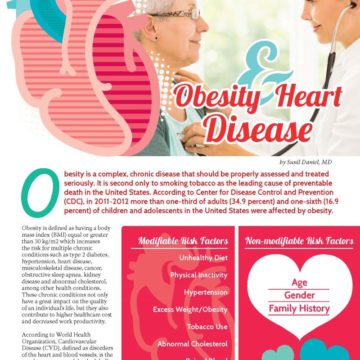Take Advantage of the Aquatic Burn


by Mira Rasmussen, BS, ACSM EP-C, Exercise Physiologist/Health and Fitness Professional
Summer 2015
What kind of exercise program allows you to ditch your athletic shoes, reduce joint pain and stay cool in the summer heat? The answer is simple – Aquatics!
What is aquatics?
Before the groans and excuses roll in, take a minute to decide if the benefits of this exercise mode outweigh your concerns. For starters, the water’s unique properties such as buoyancy and resistance create a no-impact, but fantastic calorie burn exercise–no swimming required. Aquatic exercise, sometimes known as Water Aerobics, combines the power of cardiovascular training and strength training all rolled into one total-body workout. It has a calorie burn similar to a light run or walk, and puts the least amount of stress on the body compared to these and other exercise routines.
How are they performed?
Aquatic exercises can be done in a group setting or on your own by using a few simple but effective water techniques. The best workout is attained by getting in a pool of chest-deep water, ideally set at a temperature of 83–86 degrees Fahrenheit. Most outdoor pools in the summer work great. As stated before, no swimming is required. Water walking alone, or walking with equipment that creates resistance or drag in the water, like water noodles, can provide great metabolic benefit. Of course, the harder you work in the water, the more cardiovascular and muscular improvement you will achieve.
Some ways to advance the workout on your own are by using a flotation vest so you can run in deeper water, or by using some simple water toys to add resistance to the water as you move like water dumbbells, kickboards, or other floatables. Even without equipment, you can advance upper-body exercises by closing your fingers together to make a flat paddle with your hand. This will allow you to create additional resistance for your arms as you press underwater.
Will I burn calories?
Water depth and the speed of movement also contribute to the amount of calories you’ll burn in a workout. There are a range of exercises you can do in a pool. In fact, most land exercises can be mimicked in the water, like chest presses, bicep curls and even floating crunches to strengthen your core.
Make sure to include some cardio movements, faster paced exercises that increase your heart rate and do at least one exercise for every major muscle group (chest, back, legs, core and arms). Either on your own or in the more social atmosphere of a class, an aquatic routine provides a total-body workout that burns up to 500 calories per hour.
In the past, aquatic exercise was thought to be a less effective method of exercise because of the cooling effect from the water or lack of strain and sweat we typically associate with weight-loss and exercise. However, the energy (calorie) demand from the body is equivalent to running or walking at a 10–11 minute per mile pace.
The way calories are burned in aquatic workouts is different than exercise on land. When walking or running, the amount of calories you burn is linked to the weight you carry, how fast you move and the resistance given from a machine or by climbing in elevation. On land, we can’t get away from gravity loading our joints during movement. Joint load increases with impact exercises like running or jumping. For those affected by obesity, joint load during exercise, combined with speed and repetition, can take a toll on already stressed joints.
Force across the knee joint is three times one’s body weight while walking, six times one’s body weight while stair climbing and ten times one’s body weight while jumping. For this reason, many health practitioners recommend walking or using a stationary bike for exercise. Although these two workout modes decrease the amount of load on your joints when exercising, they don’t provide the same total-body stimulation or joint relief as water. The natural resistance of water replaces the toll of gravity bearing down on your body.
It’s important to realize heart rate is affected by the environment of the water as well. Though your heart rate can be reduced by as much as 17 beats per minute when compared to land exercise, you are still meeting the exercise requirements needed to lose weight and improve cardiovascular health.
What are the other benefits of aquatics?
The buoyancy of the water can reduce overall body weight applied to a joint by about 90 percent, which leaves muscles less sore and joints feeling the benefit of movement without swelling or strain. Buoyancy also supports the individual in balance, allowing for movements in the water that may be too challenging on land. The subtle hydrostatic pressure of water can provide pain relief from inflammation and assist in awareness of body alignment. Chest-deep water provides enough pressure on the body to reduce swelling and enhance circulation. Just using the natural resistance of water is a perfect way to start strength training since water provides resistance in all directions, facilitating muscular strength and endurance. Joint mobility is increased as well as flexibility since the effects of gravity are reduced.
Due to the water’s beneficial properties, aquatic exercise is sometimes known as hydrotherapy. If you are seeking the maximum pain relief from osteoarthritis, muscle tension, or poor range of motion, a true hydrotherapy class, where the water temperature is set at a higher 89.6–96.8 degrees Fahrenheit, might be the best environment for you. Hydrotherapy is usually administered by an exercise physiologist or physical therapist, although other exercise professionals may offer this specialized class as well.
Conclusion
Water workouts, by any name, can be a fun and engaging way to exercise. The atmosphere of aquatics encourages movement as it buffers away barriers like joint pain and muscle soreness, but allows for range of motion, balance and calorie burn. Contact your local YMCA, your local university’s exercise science department or a major health club for their Aquatic Class schedule. You can also start “pooling” in the benefits on your own if you have access to a community pool.
About the Author:
Mira Rasmussen, BS, ASCM EP-C, has been an exercise physiologist and health professional for the last eight years, and owner of a specialized personal training and wellness business in Georgetown, Texas, Mira is passionate about personalizing the path to wellness and being a guide through that life-changing process. Mira has worked side-by-side with renowned dietitians, doctors and psycho-therapists using physical fitness as a vital tool for clients to reach and sustain a well-balanced life.
by Yelena Kibasova Spring 2024 The fitness world is evolving, with new trends and innovations that promise…
Read Articleby Zack Lucks, NASM-CPT, EMT Winter 2024 Working out with a loved one is a great way…
Read Articleby Nina Crowley, PhD, RD (with Inspiration from Shawn Cochran) Winter 2024 Dating, no matter your age,…
Read Article









